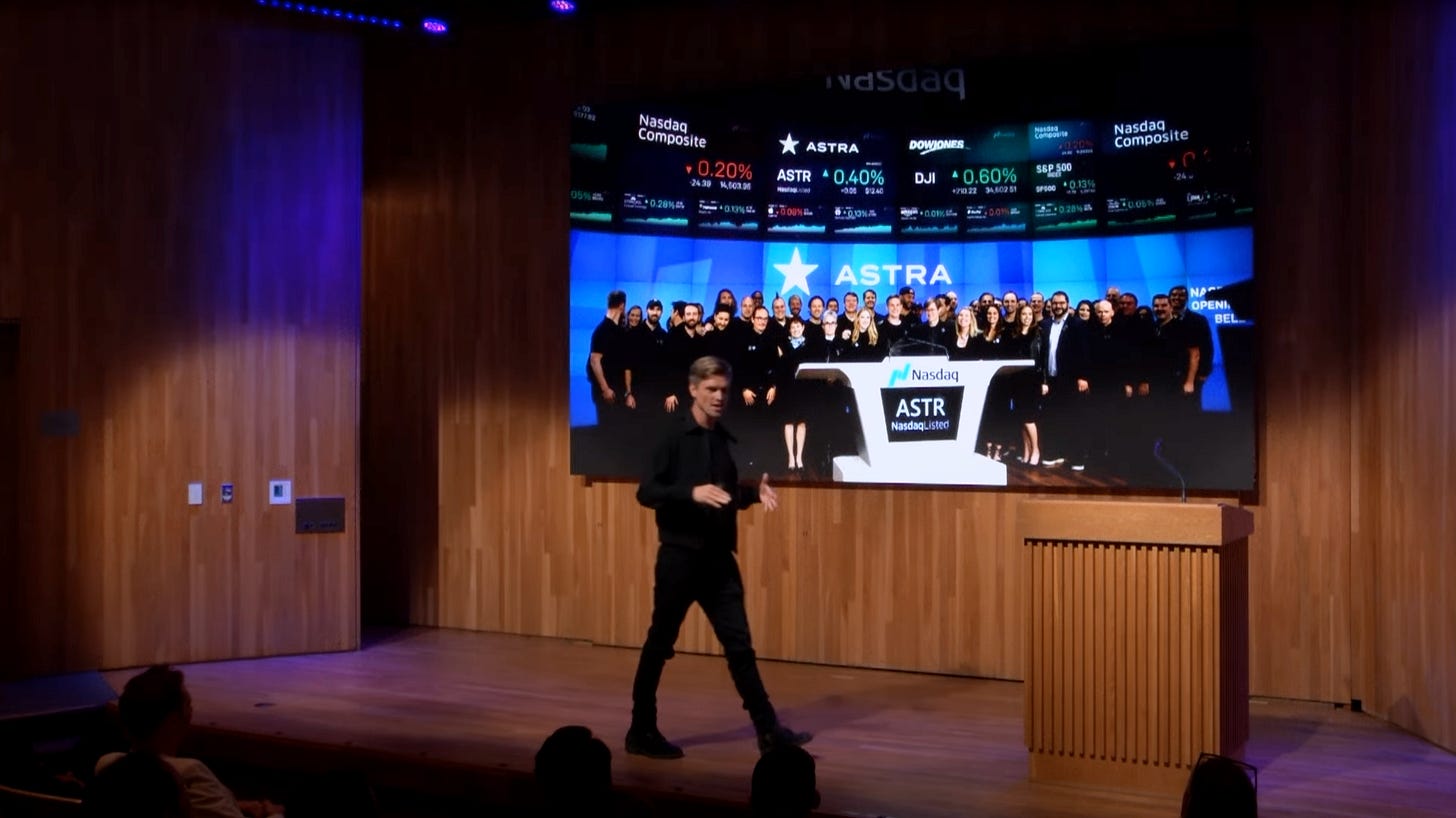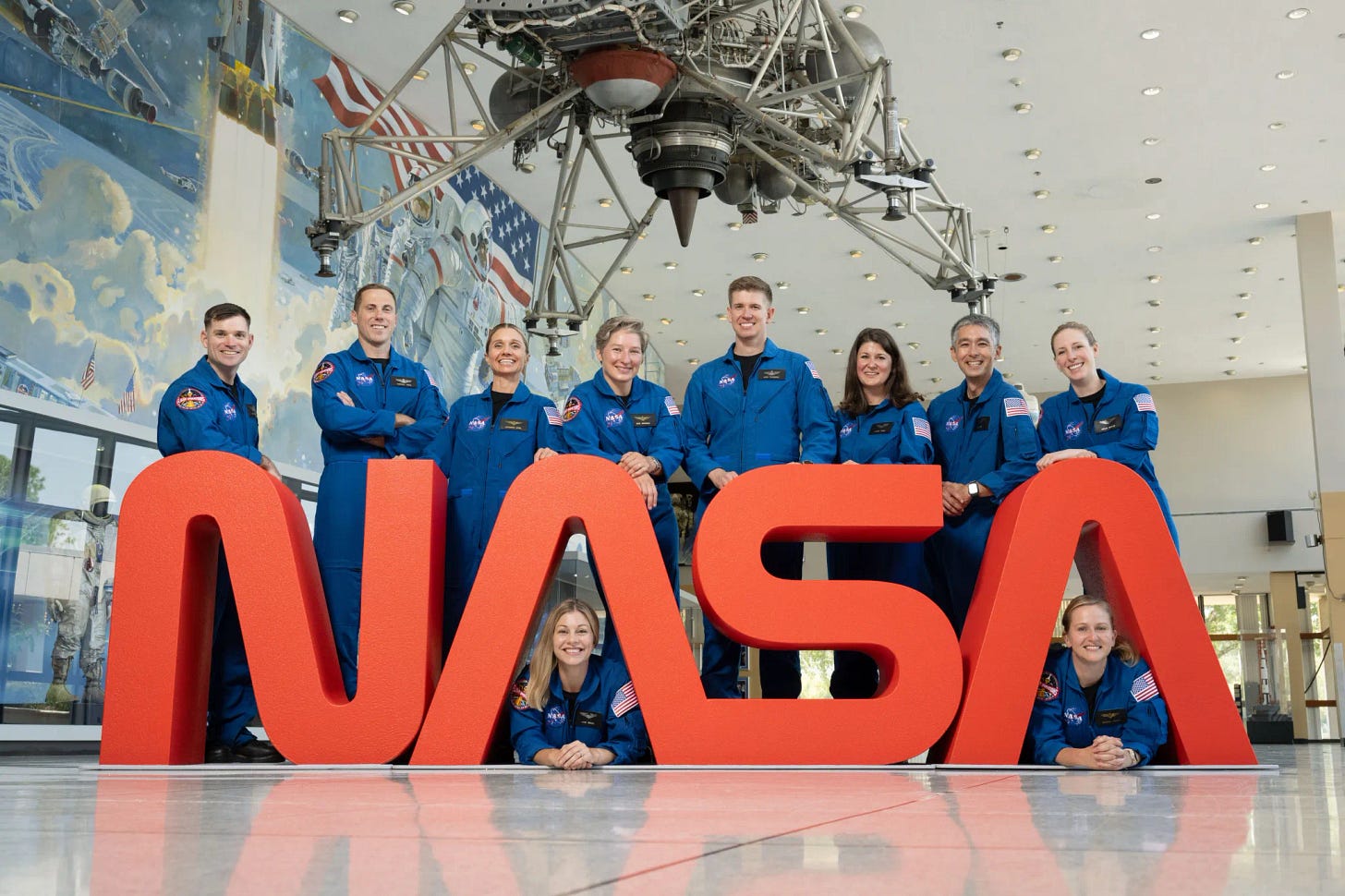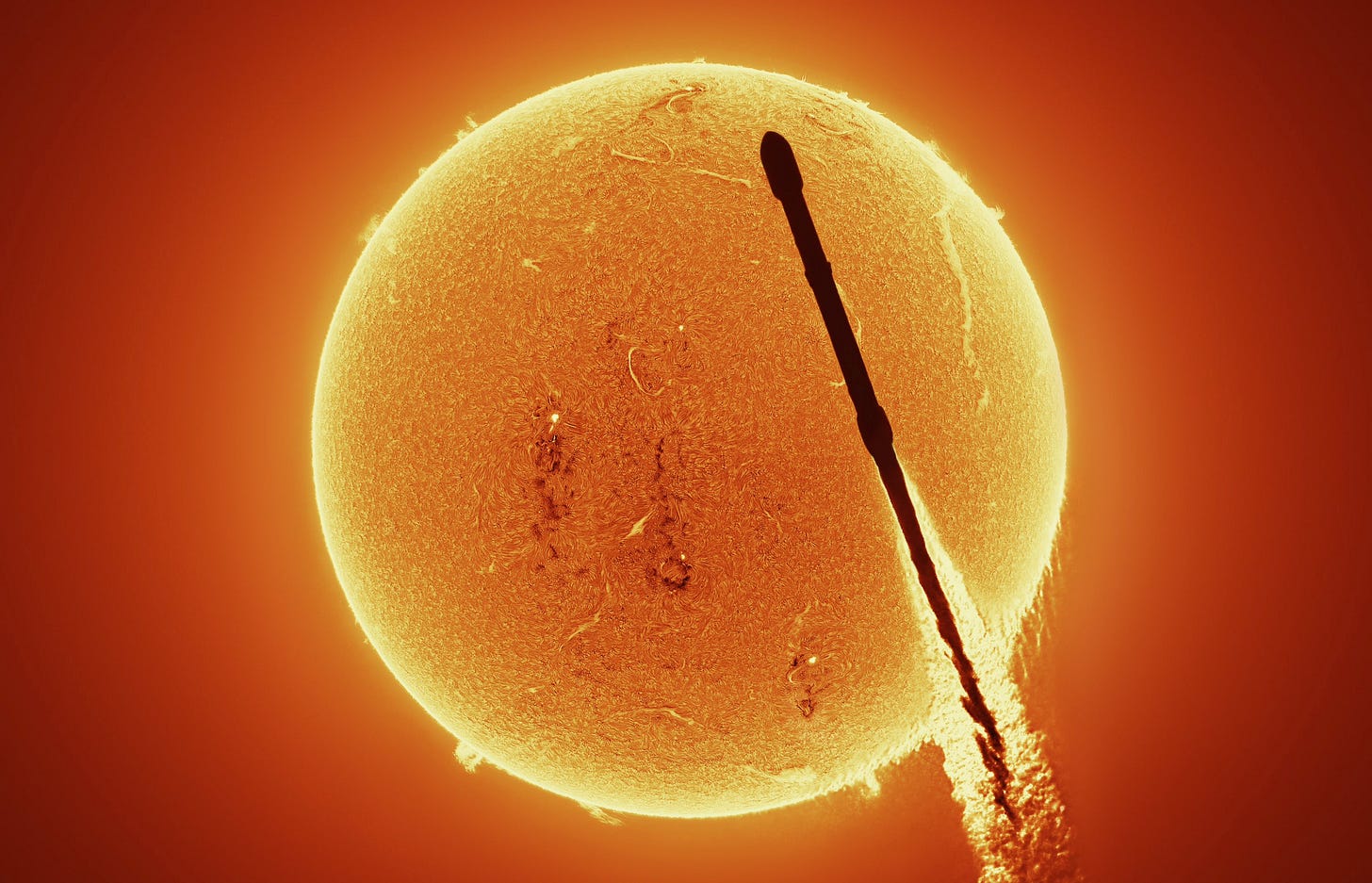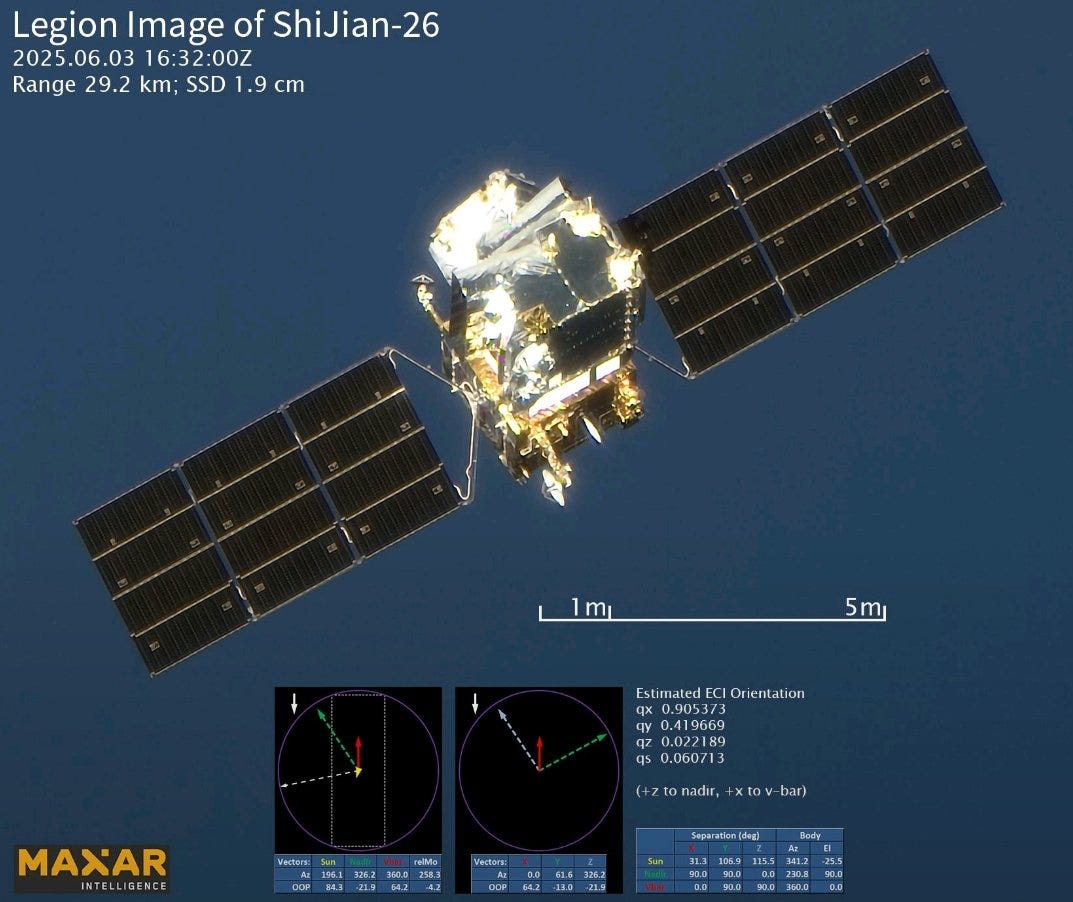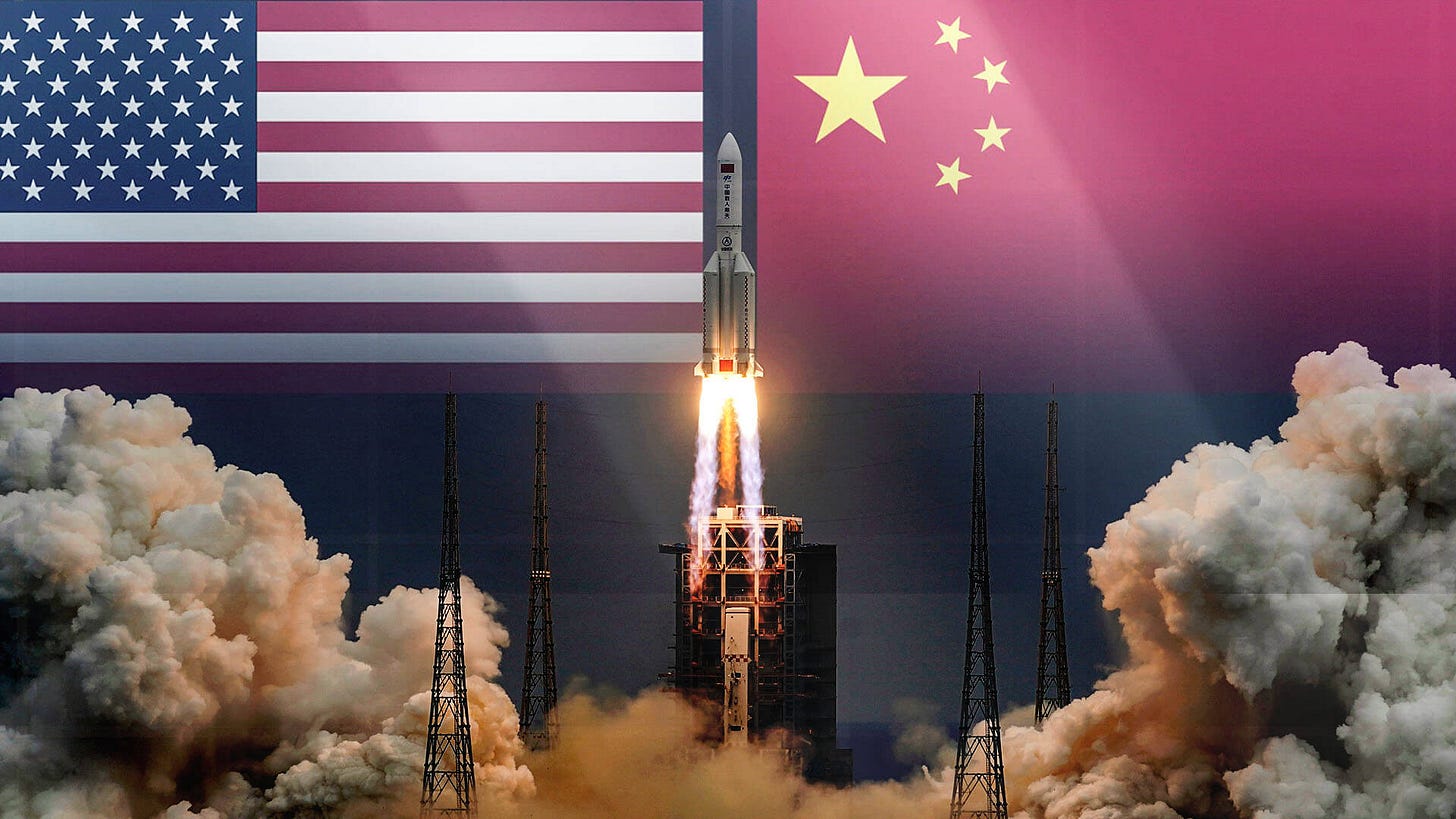This Week in Launch – #2
Beheadings at Starbase, a billion dollar game of hide-and-seek, and more
Welcome to the second issue of This Week in Launch, a roundup of space-related news posted at the end of each week.
Thank you for joining me! Let’s dive in.
Those Mexicans Will “Chop Your Head Off”
Last week, during a talk to students at UC Berkeley, Astra Space CEO Chris Kemp attempted to appeal to prospective interns in the audience by arguing that his company offers a better work environment.
He then proceeded to trash nearly every single one of his rocket competitors: Blue Origin and NASA spend “tens of billions” and take “20 or 30 years” to launch, Rocket Lab’s “little rocket is too small”, Firefly’s engines are “literal garbage”, and SpaceX is dangerous because “we’re not on the border of Mexico where they’ll chop your head off if you accidentally take a left turn.”
Yet Astra itself hasn’t been too promising. With five of seven launches failing between 2020 and 2022, its valuation crashed from $2.6 billion to $25 million, forcing Kemp to take the firm private in 2023 at 50 cents a share.
Now rebooted to focus on tactical rockets for national defense, Astra has the potential to become a nice comeback story for the industry, provided Kemp avoids alienating, well, everyone.
Note: To be clear, there have been no reports of beheadings at SpaceX
Run, Girls, Run
On Monday, at NASA's Johnson Space Center in Houston, the agency unveiled its 24th astronaut class, comprising six women and four men (the first women-dominated class) who will accelerate the pace of this intensifying space race.
Selected from over 8,000 applicants, these 10 new astronauts will join NASA’s total of 370 astronauts recruited over its 60-year history, becoming eligible for space travel in 2027, after completing two years of training.
Officials used the ceremony to stress that Artemis, which could launch as soon as February, remains on track to beat China, with acting administrator Sean Duffy noting, “One of these 10 could actually be one of the first Americans to put their boots on the Mars surface.”
Back to Stone Age
On Wednesday, SpaceX launched $1.6 billion worth of NASA satellites a million miles from Earth to monitor the Sun. The probes will gather real-time solar wind data and provide advanced warnings of geomagnetic storms that could knock out power grids, radio communications, GPS, air travel, and other satellites.
“We can now buy power grid, airline, and satellite operators’ precious time to act before billion-dollar storms strike,” said Clinton Wallace, director of NOAA’s Space Weather Prediction Center. This early warning system could give a fighting chance to prepare, particularly after the first US solar storm emergency drill in May 2024 “did not go well.”
Billion Dollar Hide-and-Seek
In a high-stakes game of tag, U.S. satellite imagery giant Maxar Technologies began in July 2025 by releasing ultra-high-resolution photos of China’s Shijian-26 spy satellite. China swiftly returned the favor on September 8, dispatching satellites from its massive Jilin-1 constellation, operated by Chang Guang Satellite Technology (CGST), to capture crisp snapshots of Maxar’s own WorldView Legion 2 satellite.
CGST then went further, releasing images of U.S. Space Force early-warning SBIS satellites as well.
While images of adversarial satellites are nothing new, the audacity and temperature levels are definitely increasing. In 2023, the U.S. Government sanctioned CGST for allegedly providing imagery to the Russians.
Does the “Cool Kids Table” Now Speak Mandarin?
In 1981, when NASA was just old enough to drink, China was one of the poorest countries on earth, with some 800 million citizens living in extreme poverty. In the four decades since, China has eradicated extreme poverty — the largest such alleviation in history — while making steady progress on a space program that’s now fighting to be number one.
A new 116-page report released last week by a Washington, D.C. trade association, titled “Redshift,” shines light on the acceleration. “I thought I had a pretty good read on China’s space program when I was finishing grad school,” said Johnathan Roll, one of the report’s authors. “That almost everything needed to be updated, or had changed three years later, was pretty scary.”
China now operates six spaceports, multiple regional research hubs, and will have the only space station in orbit once the ISS retires in 2030. In January, it surpassed the UK in satellites, now ranking second behind the USA, and plans to establish a fully operational moon base by 2035.
What’s most impressive is that the country is completing all these impressive tasks simultaneously. In other words, China is living its Apollo, ISS, and commercial space eras all at once.
Germany to Activate Space War Machine
On Thursday, Germany pledged $41 billion over the next 5 years to build its military in space, a significant increase from the country’s historically minimal annual space spending of $100 million. In his announcement, Defence Minister Boris Pistorius cited the need for resilient satellite networks, secure ground stations, better cybersecurity, radars to track space traffic, as well as offense — all to counter threats from Russia and China, who can jam, blind, or smash satellites “anytime they want”.
This marks a huge step forward in Germany’s rearmament, which many see as a welcome surprise, since German think tank Kiel Institute predicted in 2024 that it would take “up to 100 years at current rearmament pace to deter Russia”. Germany has historically relied on the United States and other European countries for critical space capabilities, such as missile warning, intelligence gathering, and launch services. This spending surge marks a shift.
The pledge coincides, likely not coincidentally, with Seraphim, one of the world’s largest space investment offices, announcing the opening of a Berlin subsidiary on Thursday.
That’s for this week. Thank you for reading, and if you have yet, please consider subscribing.
- David


